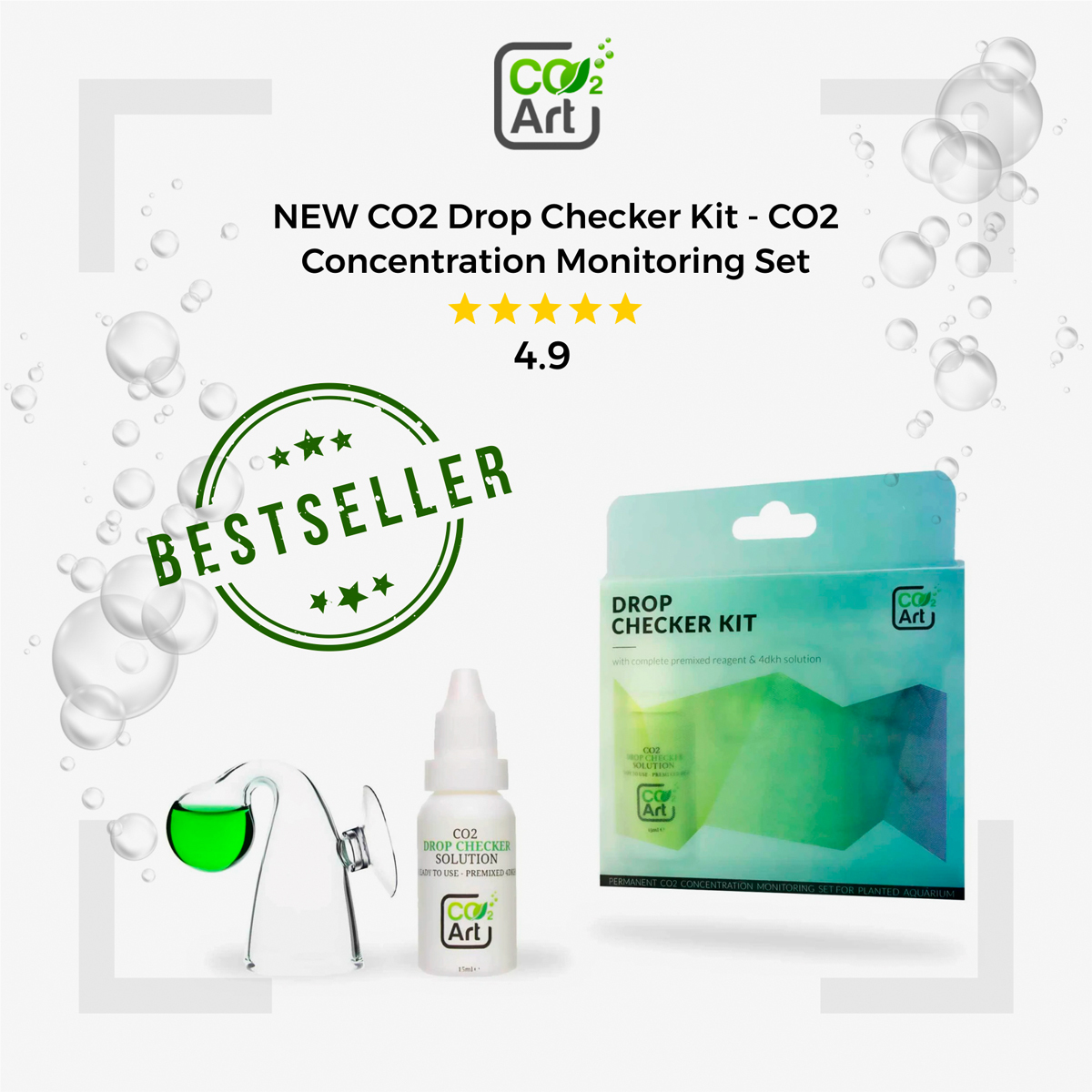The wrong way to read the pH KH chart
Planted aquarium enthusiasts understand that there's more to a thriving aquatic environment than meets the eye. Beneath the tranquil surface of well-maintained tanks lies a complex world of chemistry. The relationship between CO2 and pH, intertwined with factors like KH, plays a pivotal role in ensuring a balanced habitat for both plants and aquatic life. As we delve deeper into this topic, we'll explore common misconceptions, emphasize the importance of accurate measurements, and shed lighton tools like the drop checker that are invaluable for every aquarist.

Introduction to the pH/KH Chart
The pH/KH chart, often known as the CO2 chart, serves as a crucial tool for aquarists who aim to maintain optimal CO2 levels in their tanks. However, relying solely on this chart without understanding its intricacies can lead to misconceptions.
Understanding the Basics
At the heart of this topic lies the ph and co2 relationship. Essentially, as CO2 levels rise in water, the pH level typically drops. This is because CO2 reacts with water to form carbonic acid, which affects pH levels. Using the co2 table, aquarists can find a balance between pH and KH (carbonate hardness) to determine CO2 concentrations.
Common Misinterpretations of the CO2 Saturation Chart
The CO2 saturation chart is an invaluable tool, but without proper knowledge, it can be misleading. A primary mistake made by hobbyists is not accounting for other acids present in the water. This oversight can lead to inaccuracies in CO2 estimations.
The Pitfalls of Relying Solely on the Chart
While the CO2 chart serves as a valuable guide, it's not infallible. In many instances, the ph values derived from the chart can be deceptive. Factors such as the presence of organic acids, the use of certain substrates, or even the introduction of driftwood can influence the pH in ways the chart cannot account for.
The Importance of Accurate Measurements
Correctly measuring CO2 concentration is crucial for high plant growth and the health of aquatic inhabitants. Relying solely on the chart without considering external factors can result in drastic large pH swings. Such ph swing events can stress or even endanger aquatic life.
The Role of pH Swings in Plant and Fish Health
A consistent environment is pivotal for the well-being of both plants and fish in an aquarium. Larger ph swing events not only impact the growth and health of plants but can also cause undue stress to fish. Fish, in particular, are sensitive to sudden changes in their environment. A consistent ph value ensures their metabolic processes function correctly and keeps diseases at bay.
Tap Water's Deceptive Role
Using tap water directly in tanks can introduce a host of chemicals and minerals. These elements can skew ph values, making readings from the chart unreliable. Hence, always ensure that the tap water used has been treated and is free from impurities that can influence pH.
Navigating Tank Maintenance with Tap Water
For many, tap water is the go-to source for filling and topping off tanks. However, it's essential to be aware that tap water's composition can vary significantly. Elements like chloramines, which many municipalities use to treat water, can influence ph values and other water parameters.

Always consider using a water conditioner or letting tap water sit for a period before introducing it to the planted tank to ensure it doesn't negatively affect the established environment.
The Efficacy of Drop Checkers
One of the most reliable ways to monitor CO2 levels in a planted tank is by using a drop checker. A drop checker offers a visual indication of CO2 concentration, reducing the guesswork. The color change in the drop solution inside the checker can provide real-time feedback.

Not only does this method safeguard against pH swing, but it also ensures that plant growth remains optimal. The importance of getting the right measurement cannot be overstated, and a drop checker helps immensely in this regard.
Drop Checkers vs. Traditional Methods
While traditional methods like the CO2 table have their place, drop checkers offer a more real-time, visual representation of CO2 concentrations. This immediate feedback allows for quicker adjustments, ensuring that CO2 levels remain within the desired range, promoting healthy plant growth and preventing undue stress to the tank's inhabitants.
Conclusion: Ensuring Balance and Precision
The pH/KH chart is undoubtedly an essential tool in the aquarist's arsenal. However, using it correctly requires understanding its limitations and the influences of external factors. Always remember to consider factors such as tap water composition and the presence of other acids when interpreting ph values. Embrace tools like the drop checker for more accurate readings, ensuring that your tank remains a thriving, balanced ecosystem.

By placing emphasis on the right techniques and tools, aquarists can foster vibrant plant growth and create a harmonious environment for all tank inhabitants. Remember, while charts and tables offer guidance, nothing replaces observation and the use of reliable tools in the quest for aquarium perfection.
Any questions? Our Customer Service is always ready to answer them! Contact us directly via support@co2art.us!





